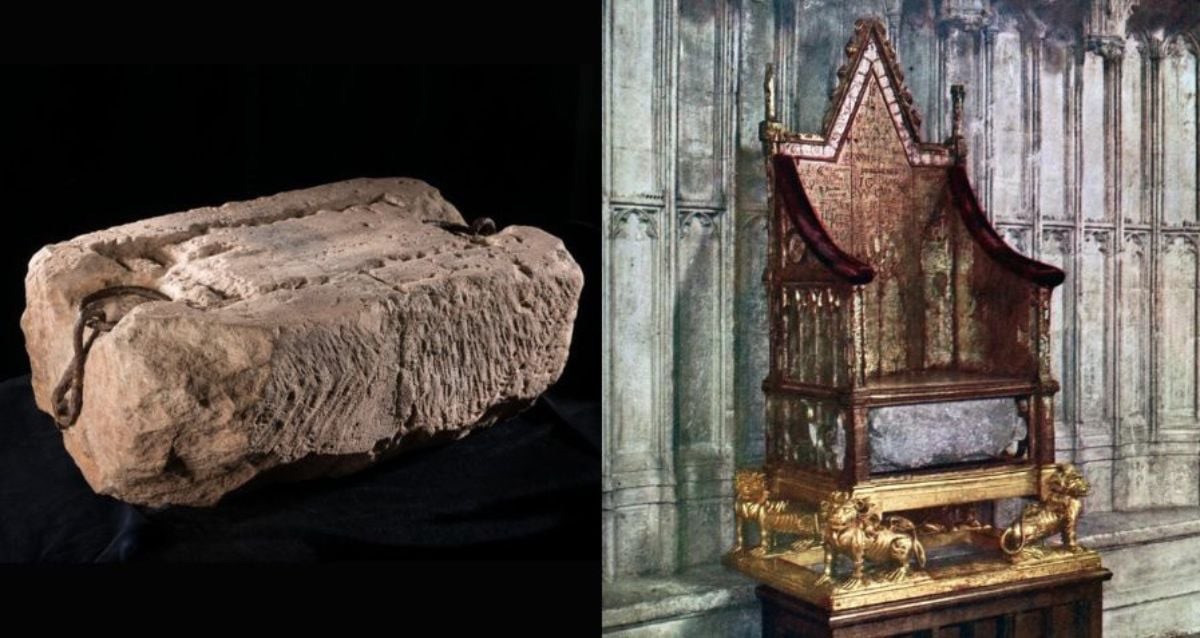Throughout history, certain objects have taken on extraordinary meanings, serving as symbols of justice, power, and unity. Two such stones, the Stone of Scone in the United Kingdom and the Howard Stone (often cited in discussions of symbolic justice and historical reconciliation) offer compelling narratives about sovereignty, cultural respect, and reconciliation.
These stones not only symbolize historical justice but also inspire a model for broader global justice. Examining the stories and symbolism of these stones offers valuable lessons on how historical justice and cultural reconciliation might be embraced worldwide.
The Stone of Scone – A Symbol of Justice and Sovereignty
The Stone of Scone, or Stone of Destiny, is one of the most iconic symbols of Scottish identity and sovereignty. A block of red sandstone, the stone was traditionally used in the coronation ceremonies of Scottish kings at Scone Abbey for centuries, embodying a promise that rulers would protect and serve the people. It was a sacred seat of justice, an emblem of the Scottish crown, and a reminder of the monarch’s duty to rule with fairness and integrity.
In 1296, England’s Edward I took the stone as a spoil of war, transporting it to Westminster Abbey in London as a symbol of England’s dominance over Scotland. This act was felt as a deep injustice by the Scots, as the stone represented their history and sovereignty. For centuries, the stone sat under the British Coronation Chair, part of every English and later British coronation, yet it also symbolized a loss of Scottish independence.
In 1996, however, the UK government returned the Stone of Scone to Scotland as a gesture of reconciliation and respect for Scottish heritage. This act corrected a long-standing historical injustice, acknowledging Scotland’s cultural identity and historical significance within the United Kingdom. The stone now resides in Edinburgh Castle, where it represents both Scotland’s unique heritage and its unity with the broader UK, with the understanding that it will return to Westminster Abbey for future coronations.
Howard’s Stone – A Theoretical Symbol of Reconciliation and Restoration
While the Howard Stone is less historically documented, it is often referred to in conversations around symbolic justice, illustrating the universal principles of cultural respect and reconciliation. Unlike the Stone of Scone, which has a specific national identity, Howard’s Stone can be seen as an archetype for justice, a stand-in for any cultural artifact, relic, or symbol that holds deep meaning for a community or nation.
This stone’s symbolism revolves around the idea of reclaiming lost heritage and restoring dignity to those who have been historically marginalized or oppressed. It underscores the belief that respect for a community’s symbols is essential to honoring their identity and history. By symbolizing the restoration of cultural treasures to their rightful place, the Howard Stone embodies the broader principle of returning heritage objects to the nations or communities from which they were taken, especially in cases where those artifacts were removed under colonial or coercive circumstances.
Historical Justice and Cultural Reconciliation on a Global Scale
The return of the Stone of Scone set an important precedent for historical justice and cultural reconciliation, demonstrating how an act of restoration can heal past grievances and respect cultural identities. This gesture exemplifies the concept of restorative justice a justice that seeks to heal rather than simply punish. In returning the stone to Scotland, the UK acknowledged Scotland’s history and sovereignty within a shared union, fostering mutual respect and unity.
This example calls for similar actions on a global scale. Many cultural artifacts and heritage objects are still housed in museums far from their places of origin, often taken under unjust conditions. From the Benin Bronzes of Nigeria to the Elgin Marbles of Greece, countless artifacts continue to reside in foreign institutions, removed from their cultural contexts. These objects are more than historical items, they are symbols of identity, community, and heritage.
Applying the Lessons of the Stones to Global Justice
1. Respecting Cultural Heritage: As seen with the Stone of Scone, cultural symbols carry deep significance. Nations and institutions around the world should respect and honor the heritage of other communities by returning symbols and artifacts to their places of origin, where they can once again serve as a source of pride, identity, and historical continuity.
2. Promoting Unity Through Reconciliation: Repatriating cultural artifacts fosters unity, both within and between nations. It shows a commitment to addressing past injustices and valuing the diverse histories that make up the global community. Returning these symbols can foster new relationships, based on respect, between former colonial powers and the communities they once governed.
3. Fostering Global Cultural Cooperation: Through cooperative agreements, countries and institutions can create exchanges, shared exhibits, and rotating displays that allow these treasures to be accessible to all while respecting their origins. The Stone of Scone’s journey between Scotland and Westminster Abbey demonstrates how shared stewardship of cultural symbols can bring nations closer together while respecting their distinct identities.
4. Reaffirming the Role of Restorative Justice: The Howard Stone represents the universal idea of restorative justice, a principle that values healing and reconciliation over retribution. By prioritizing the return of cultural treasures, we acknowledge past harms, embrace empathy, and promote healing. Restorative justice on a global scale goes beyond legal frameworks, it seeks to restore dignity to those whose histories and identities have been displaced.
Final Note – A Global Path Forward
The stories remind us that objects can carry far more than material value. They embody histories, relationships, and the enduring hope for justice. There is an great opportunity for nations worldwide to honor other cultures by returning their treasures. When we respect and restore what was unjustly taken, we build a world that values justice, unity, and mutual respect.
In this spirit, the symbolism of these stones becomes a powerful call to action. By honoring history and embracing restorative justice, we move toward a global community where cultural heritage is valued, and justice is both remembered and realized.
